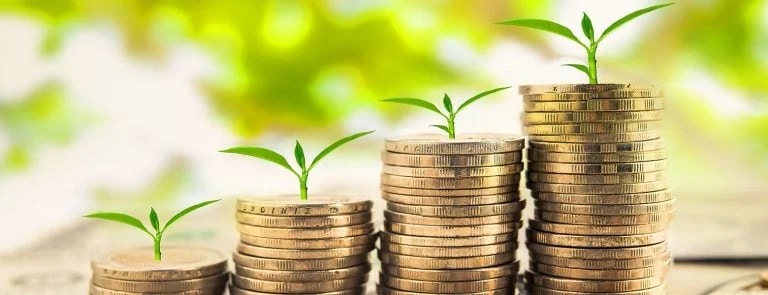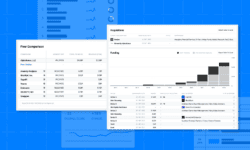The New York Stock Exchange launched a central repository of ESG reporting resources in its public access website on March 3, 2017. This, plus other recent expansions by NYSE in its public positioning on ESG/Sustainability should surely capture attention. This strategic move shows they are taking the maturing sustainability field even more seriously with respect to mainstream capital market considerations.
In the past two years, sustainability investments have grown to account for about 26%, or $22.89 trillion, of all professionally managed assets worldwide as of 2016 – a 25% increase since 2014.
Sustainability investment strategies used in the two largest capital markets now stand at:
- 53% ($12.04 trillion) of total AUM in Europe – a 12% increase
- 22% ($8.72 trillion) of total AUM in the U.S. – a 33% increase
Investment assets distribution does differ geographically:
- In Europe, identifiable SRI bond investment has eclipsed equity investment at a relationship of 64% to 33% in 2016, compared with 40% to 50% in 2014
- SRI assets mix in the U.S. is now 26% retail to 74% institutional, with retail notably doubling from 13% of the mix in two years
Specific to green bonds, Standard & Poor’s [$SPGI] just announced two new product initiatives in its S&P DJI Green Bond Select Index, which launched on March 9, 2017, and its S&P Global Ratings launch of a new Green Evaluation Service on April 26, 2017. The latter was advertised as, “a comprehensive approach to measuring sustainability at the asset level,” and separate from the traditional S&P credit ratings.
Help from AlphaSense
Given these and other related trends, I decided to run a few AlphaSense queries focused on U.S. capital markets sector companies. I ran queries for ESG, or environmental investment funds and green bonds. My question being, could I find evidence that sustainability is being used by competitive companies to attract investor capital?
The answer was, yes. I found three categories of results:
- Investment institutions – highlighting ESG / environmental fund offerings and asset balances
- Ratings agencies, indexes and stock market exchanges – highlighting the support they provide across the investment community in ESG reporting, investment product construction, performance tracking and analysis
- Green bonds related
Attracting capital
My AlphaSense searches were narrow by design and only captured publicly traded investment institutions that essentially advertised ESG related activity in their newest annual report/proxy filings or press releases. So, the examples below provide just a glimpse of competitive activity in the capital markets.
- May 15, 2017 – Fidelity launched two sustainability-focused index funds — Fidelity U.S. Sustainability Index Fund and Fidelity International Sustainability Index Fund — to provide investors with additional choice for their environmental, social and governance (ESG) investments.
- January 19, 2017 – Northern Trust Asset Management [$NTRS] launched a unique Sustainable Real Estate Index and Fund in conjunction with the Global Real Estate Sustainability Benchmark (GRESB).
- In its June 15, 2016 proxy, Legg Mason [$LM] indicated having recently commercialized two Environmental, Social & Governance (ESG) products globally. That led me to look at their company website, where I found extensive ESG product offerings, network participants and investment solutions.
- May 17, 2016 – Gabelli [$GBL] announced that it changed the name of its Gabelli SRI Fund to The Gabelli ESG Fund to “reflect the Fund’s broadened, proactive approach to consider environmental, social and governance issues in today’s investment landscape.”
Rating Agencies – Indexes
- October 4, 2016 – Morningstar [$MORN] launched 27 ESG indexes “to meet ESG investing appetites.”
The index series “builds on the research firm’s proprietary Sustainability Ratings for over 20,000 funds, as well as equity research on 1,400-plus companies… based on company-level ESG research and ratings from Sustainalytics, an independent data provider.”
This announcement came in quick succession to its Morningstar Sustainability Ratings launch on March 1, 2016.
- September 29, 2016 – Bloomberg added RobecoSAM data to its ESG Dashboard.
This announcement was made shortly after MSCI’s announcement (below). Together with S&P Dow Jones Indices, RobecoSAM publishes and maintains the Dow Jones Sustainability Index (DJSI).
Exchanges
All four of the Exchanges that came up in the AlphaSense search advertised their affiliation with the Sustainable Stock Exchanges Initiative (SSE) and some of their sustainability related listings.
To augment the results for NYSE [parent $ICE] and Nasdaq [$NDAQ], I ran two quick internet queries, “NYSE + Sustainability” and “Nasdaq + Sustainability.” The top result for each found landing pages with the following positioning (plus rich content scrolling further on their respective pages):
- “At the New York Stock Exchange, we help companies raise capital so that they can invest, innovate and grow. As a member of the UN SSE and the WFE sustainability working group, we are actively contributing to the dialogue on transparency on ESG matters…” – NYSE Sustainability in Focus
- “As the world’s first electronic exchange, Nasdaq was a pioneer in the sustainability space…” – Nasdaq’s Sustainability Focus
Two foreign exchanges came up in the AlphaSense search interestingly. EuroNext NV [$ENX.NL] was advertising various green bond listings and trading volume.The London Stock Exchange Group [$LSE.GB] was advertising that it has been a leading innovator in the space of green bond issuance and was the first exchange to join the climate bonds initiative. Also, that there are currently 40 green bonds listed in London which have raised a combined US$10.5 billion across seven currencies and a diverse set of issuers
Green Bonds
- August 15, 2016 – BlackRock [$BLK] launched the BlackRock Impact Bond Fund, “a mutual fund that aims to generate competitive financial returns while investing in measurable social and environmental outcomes…The Fund will be the first broadly available U.S. fixed income fund launched by BlackRock since the formation of BlackRock Impact, the firm’s $200 billion sustainable investing platform.”
- Morgan Stanley [$MS] advertised in its 2017 proxy that it is a “Leader in green bond innovations and launched Morgan Stanley green bond in 2015.” It also mentioned that the Morgan Stanley research team developed a framework for ESG integration into valuation models and is integrating this framework into traditional stock coverage. [
- Lastly, it is important to deviate from a corporate mindset to also share that sustainability green bonds have taken off with accelerated demand in the municipal bond fund arena.
Final Word
NYSE, the oldest U.S. stock exchange, Nasdaq and a myriad of mainstream institutions are taking sustainability seriously as a strategic opportunity to compete for capital. Are you?
Pamela Styles is principal of Next Level Investor Relations LLC, an Investor Relations consultancy with dual IR and ESG/Sustainability specialties.




